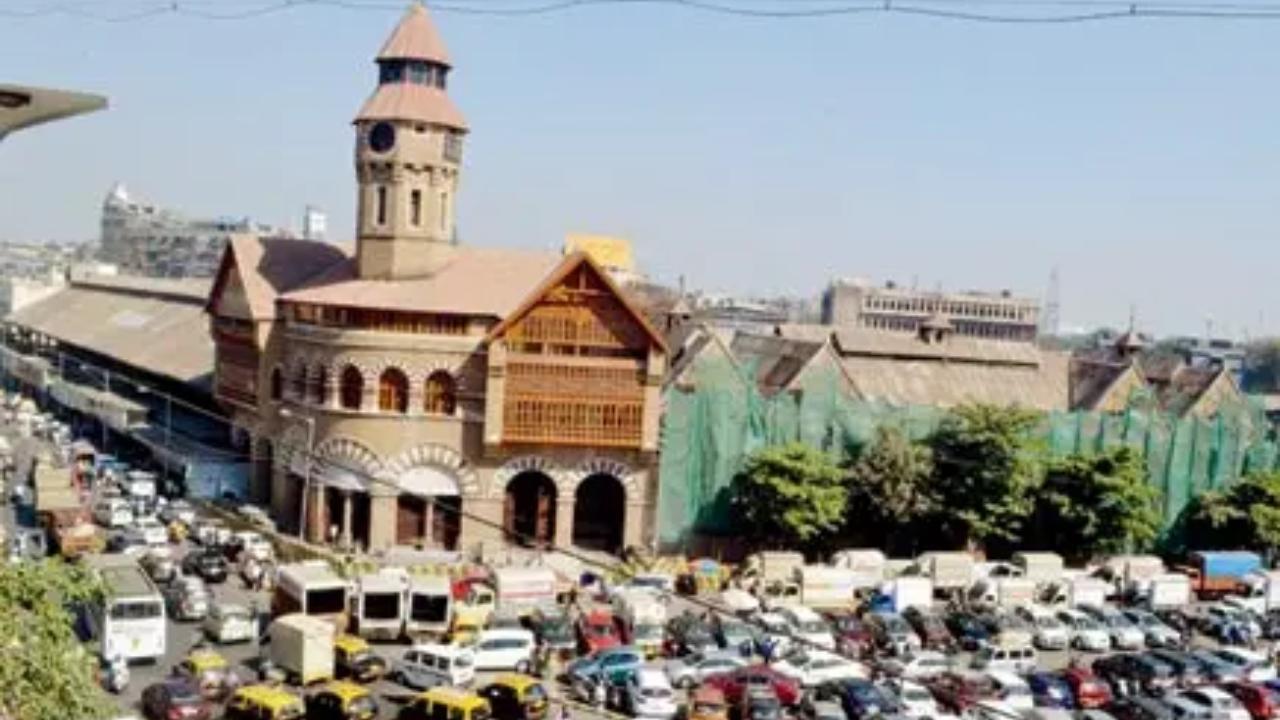Redevelopment, lack of initiative and continuous neglect continue to cast its ugly net over the city as we continue to lose invaluable footnotes and memories that are intangibly associated with the lives and times of illustrious Bombaywallahs

File Pic
 It remains one of the most memorable frames from my previous visit to London. By the second week of my stay in that city, commuting by the tube had become a comfortable and convenient way to move around. I heard the voiceover inform tube commuters that our next halt was Baker Street. And with a lot of excitement I gladly hopped off the tube at the station. Like a child in a candy shop, I gazed at the wonderful visual tribute that was plastered along the walls and the approach all the way to the main street outside the station. There were rows and rows of silhouette frames that celebrated Sir Arthur Conan Doyle’s world-famous sleuth, Sherlock Holmes. I stood there for a few moments to soak in my little achievement of having ticked off the name of another literary classic from my must-see list. This was a visit that went straight into my bank of memories. London was filled with many such fascinating salutes to their literary heroes, where homes of greats like Charles Dickens, Dr Samuel Johnson, Virginia Woolf and Alfred Lord Tennyson were thrown open to experience as a literary tourist.
It remains one of the most memorable frames from my previous visit to London. By the second week of my stay in that city, commuting by the tube had become a comfortable and convenient way to move around. I heard the voiceover inform tube commuters that our next halt was Baker Street. And with a lot of excitement I gladly hopped off the tube at the station. Like a child in a candy shop, I gazed at the wonderful visual tribute that was plastered along the walls and the approach all the way to the main street outside the station. There were rows and rows of silhouette frames that celebrated Sir Arthur Conan Doyle’s world-famous sleuth, Sherlock Holmes. I stood there for a few moments to soak in my little achievement of having ticked off the name of another literary classic from my must-see list. This was a visit that went straight into my bank of memories. London was filled with many such fascinating salutes to their literary heroes, where homes of greats like Charles Dickens, Dr Samuel Johnson, Virginia Woolf and Alfred Lord Tennyson were thrown open to experience as a literary tourist.
ADVERTISEMENT
They had more such valuable initiatives, including the circular Blue Plaque scheme by English Heritage and the square blue plaques of The City of London Corporation. In fact, the former’s initiative that started in 1860 is believed to be the oldest in the world. These plaques installed in home and office addresses, commemorate the lives and times of not just English stalwarts, visionaries and campaigners but also those who came to England from elsewhere, including a long list of Indians, from Mahatma Gandhi to Dadabhai Naoroji and Raja Rammohan Roy. A plaque that caught our attention, installed at 10, Howley Place, was to honour Lokmanya Tilak who lived at this address in 1818-19.
Also read: Why BJP is wary of a Congress-like situation
The reason I am mentioning this particular detail is because it came rushing back to my mind after the mention of a small [for some of our authorities, perhaps] development that caught my eye last week when a friend posted a photograph of an old tiled-roof structure in Girgaum that was going in for redevelopment. It was none other than the childhood home of cricket legend Sunil Gavaskar. As soon as the photograph surfaced, it led to countless comments and recollections by people on his timeline, upset at the loss of another vital marker in our city’s timeline. My thoughts echoed many of those who rued the disappearance of these slices and cornerstones of history because they represented the city’s heroes, its icons and founding fathers. In fact, only recently, we learnt that a building opposite Cymroza Art Gallery where the great Nissim Ezekiel once lived, is no longer there. This critical fact was shared by none other than his daughter, Kavita Ezekiel Mendonca. Such permanent losses, where locations that formed important footnotes and key chapters in famous Bombaywallas’ lives, are brought to our attention ever so often.
And there are those that are in serious need of a dekko. A few weeks before that, while wandering near Crawford Market, I was able to locate the Sardar Gruha building where Tilak breathed his last and would have possibly drafted many stirring editorials for the Kesari newspaper. We all studied in our History classes the massive role it had played in creating awareness and stirring national sentiment in pre-Independent India. My mind went back to that detail that I had spotted on the circular Blue Plaque scheme website about Lokmanya Tilak’s one-year stay receiving its due. Even to the untrained eye, this building near Crawford Market needs a well-deserved restoration. Some online research threw up newspaper reports that reveal pleas made in the past to convert it into a national monument since it continues to house his belongings and other reminders from his life.
There must be many such buildings attached with historic legacy that remain in danger of ruin thanks to lack of necessary financial support. It underlines the scant respect we give to these once living and breathing markers associated with the city’s great men and women. Whether it is Lokmanya Tilak, Nissim Ezekiel or Sunil Gavaskar, each of them in their respective fields left a huge legacy not just in the city but across India and the world. To salvage and secure the remaining markers by identifying and safeguarding these landmarks requires a mammoth effort necessary from the state and civic authorities who will need to work in tandem with citizens, conservationists and historians. Only then can we hope for a fresh, renewed effort that can preserve slices and memories that belong to the original Bombay.
mid-day’s Features Editor Fiona Fernandez relishes the city’s sights, sounds, smells and stones...wherever the ink and the inclination takes her. She tweets @bombayana
Send your feedback to mailbag@mid-day.com
 Subscribe today by clicking the link and stay updated with the latest news!" Click here!
Subscribe today by clicking the link and stay updated with the latest news!" Click here!







